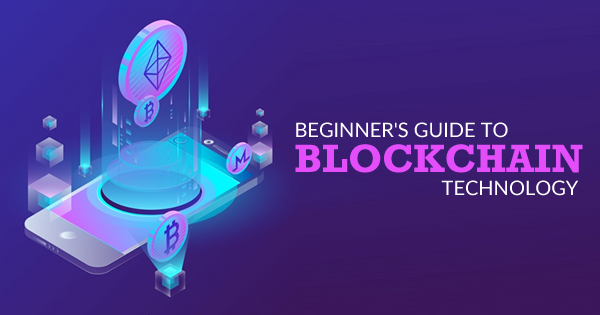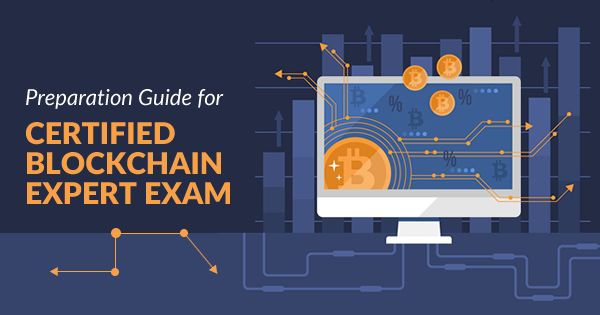Bitcoin and Cryptocurrency took the world by storm in 2018 and over the period we have seen its growing craze for financial actions like a currency exchange. However, Bitcoin is not something very new concept. Introduced in 2008, this digital currency is an application of Blockchain technology, an innovation by a group of people with the pseudonym Satoshi Nakamoto.
Blockchain technology is possibly the next biggest thing after the internet in the tech world not only because of Bitcoin application but also for its other potential uses. Today, companies are on the verge to create decentralized internet using Blockchain technology.
Preparing to become a Certified Blockchain Expert? Follow this Certified Blockchain Expert preparation guide and get ready to pass the exam.
Though we are much talking about Bitcoin, Blockchain, and other technical jargons today, only a few of us know about how it works and why has it become a hype? Hence, in this blog, we will discuss the basics of Blockchain technology and its applications.
Introduction to Blockchain Technology
To a layman, Blockchain is a public financial ledger or a record of transactions where each of the transaction is authenticated and authorized. The Blockchain is designed as a decentralized network of millions of computers which are commonly termed as ‘nodes.’ It is a distributed database architecture where each of the nodes plays the role of administrator of the network that joins the network voluntarily. As no centralized information exists in Blockchain architecture, hence it is literally impossible to hack the information.
Blockchain architecture maintains a growing list of ordered records which is known as blocks. Each block maintains a timestamp and a link to a previous block.
How does Blockchain Work?
The working pieces of Blockchain technology are:
- A P2P network
- Cryptography hashing
- Data structure algorithms
- A distributed time stamping server
- Digital signature
- Automatic but conditional execution of scripts
Overview of the Blockchain Process Flow
In a Blockchain flow, data exchange is referred to as a transaction. When a new transaction or a modification to an existing transaction takes place, the majority of the nodes within a Blockchain network execute algorithms to evaluate and verify that individual block. Here a digital signature associated with the transaction signs and authorizes a transaction digitally. It consists of two cryptographic keys known as the public key and a private key. A private key is similar to a password for an account.
If the signature and history of the transaction are valid, then the verified record of that transaction is added to the ledger (consolidated records of all exchanged data). This verified record is known as a block.
How does a Block Get Added in the Blockchain?
The Blockchain technology works on data structure algorithm and cryptographic hashing. To get added in the Blockchain, a block must have the answer to a cryptographic hash function which is indeed a complex mathematical problem to be solved. The possible solution of such a problem is a random number that needs to be combined with the previous block content.
Though it ideally takes a year for a computer to solve this highly complex algorithm generated problem, however, as the Blockchain network consists of a huge number of computers the probability of solving the problem becomes high. Hence, it takes 10 minutes on an average to solve such problems. Now, the node which solves the hash code gets the right to add the new block in the chain.
Once one transaction is finished, it creates a secure and unique hash code using a cryptographic hashing technique that associates the transaction with the next block. Thus it puts the blocks one after the other to organize a time-related chain. Hence, it is known as Blockchain.
If the majority of the blocks deny the entry of a new or modified transaction, then it will not be added into the ledger. Thus Blockchain runs without any unifying authority and in a distributed consensus model. As a result, Blockchain has its inbuilt robustness with no single entity that controls its flow and no single point of failure. Thus the architecture as a whole is durable.
What is the Mining Pool in Blockchain Technology?
As we have mentioned above that it takes around one year for a computer to solve a block. Hence the nodes together make groups. Thus they divide the number of assumptions on the hashcode to solve the next block. As a result, it makes the process faster. These groups are called mining pools.
What are the Different Types of Blockchain?
Blockchain technology can be categorized into three types based on its working principles:
- Public Blockchain – Ethereum, Bitcoin, Litecoin
- Private Blockchain – Internal to an organization
- Federated Blockchain – R3, EWF, B3I
Features of Public Blockchain
- It works on Proof of Work (PoW) consensus algorithms and follows related protocols. Public Blockchain does not need any permission as it is open source.
- You can determine the new blocks with their existing state as it is an open source. Also, you can download the code and validate transactions in the network.
- It makes possible transactions all through the network.
- Public Blockchain allows transparent transactions in an anonymous or pseudonymous way.
Features of Private Blockchain
- Private Blockchain decouples core Blockchain protocol from the smart contract layer.
- Using private Blockchain, you can open up the scope of programmable transactions which is commonly known as Smart Contracts and also online markets.
Features of Federated Blockchain
- The leadership of a group operates it.
- Verifying transactions using federated Blockchain technology is not possible.
- It has higher scalability and privacy.
- It is faster than other Blockchain technologies.
- It is controlled by a pre-selected set of nodes.
- It reduces data redundancies along with transaction costs.
- Replacing legacy systems using it is easier.
Preparing for Certified Blockchain Expert (CBE) exam? Check your current level of preparation with the Whizlabs Certified Blockchain Expert Practice Tests.
What are the Different Blockchain Technology Applications?
The Blockchain technology is widely used in Fintech applications. Along with the Fintech application, Blockchain technology is used in below applications to create value in the business.
-
Smart Contracts
Smart contracts are a way to do value exchange with transparency where no third party is involved in the transaction process. Distributed ledger like Blockchain technology enables smart contracts when specified conditions are met. Ethereum is an open source public Blockchain technology that has the potential to leverage the smart contracts facility. With the current development of Blockchain technology, smart contracts can be automated using Bitcoin.
-
Decentralized Sharing Economy
With the decentralized network, the Blockchain technology enables peer-to-peer payments which ultimately results in a truly decentralized sharing economy.
-
Crowdfunding
With the growing popularity of Crowdfunding, Blockchain technology takes this interest to the next level by potentially developing crowd-sourced venture capital funds. Ethereum-based DAO (Decentralized Autonomous Organization) is one such Crowdfunding example which had raised an amount of USD 200 million within two months. Not to mention, this was another form of smart contracts.
-
Transparent Governance
Transparency matters a lot a when you are in a business and in that context Blockchain technology is changing the landscape of governance. As this distributed database technology enables full transparent and accessible contracts, organizations are in verge to take Blockchain based decision making. We can see Ethereum based smart contracts in use for maintaining digital assets or organizational information for data governance practice.
-
Use in Supply Chain
Blockchain technology provides transparency in products through auto-generated time-stamping which mentions the location and time of the product generation. This helps to strengthen the reliability of a business and certify that they are genuine.
-
Empowering Web 3.0 for File Storage
The decentralization concept of Blockchain technology has spawned web 3.0 which is going to bring a revolutionary change in the web world. Now it is going to be Blockchain internet that has provided the concept of distributed file storage. Instead of Google drive, it has enabled us with technologies like Inter Planetary File System (IPFS). The main benefit of distributed file storage is – as the data is not centralized it protects data from hacking.
-
Ease of KYC and AML Process
Know your customer (KYC), and anti-money laundering (AML) are two widely accepted practices that can be potentially benefitted from being adapted to the Blockchain technology. As the financial institutions currently need to perform an intensive multi-step process for each of its customers, it is a costly affair for these institutions. However, if Blockchain is introduced to this process, it can reduce the costs through cross-institution client verification, while increasing analysis and monitoring effectiveness.
Also Read: High-Paying Blockchain Jobs in 2024
What are the Main Benefits of Blockchain Technology?
Blockchain technology has been widely accepted due to a number of benefits it provides. Let’s have a look at the main benefits of the blockchain technology:
- As there is no central authority to control the transaction it is an ideal ledger for joint ventures.
- The digital signature and verification process used in Blockchain technology help to prevent fraudulent activity.
- As in Blockchain architecture, there is no presence of centralized information it prevents loss of any information.
Bottom Line
To conclude, Blockchain technology is the revolution in the IT world. It is perfect for individuals as well as businesses; it prevents the loss of data and any fraudulent activities. Are you looking for blockchain solutions or thinking to join blockchain training? Hyperledger, ConsenSys, The Ethereum Foundation, and BlockApps are some of the popular training bodies in the Blockchain technology which provide blockchain solution as well as blockchain training.
If you want to be a Blockchain developer you must have in-depth concepts on it building blocks along with programming expertise. Whizlabs has launched the Practice tests for Certified Blockchain Expert Certification that will give you core concepts of Blockchain technology.
Hence, join us today and validate your skills as a Blockchain expert!
- Top 20 Questions To Prepare For Certified Kubernetes Administrator Exam - August 16, 2024
- 10 AWS Services to Master for the AWS Developer Associate Exam - August 14, 2024
- Exam Tips for AWS Machine Learning Specialty Certification - August 7, 2024
- Best 15+ AWS Developer Associate hands-on labs in 2024 - July 24, 2024
- Containers vs Virtual Machines: Differences You Should Know - June 24, 2024
- Databricks Launched World’s Most Capable Large Language Model (LLM) - April 26, 2024
- What are the storage options available in Microsoft Azure? - March 14, 2024
- User’s Guide to Getting Started with Google Kubernetes Engine - March 1, 2024






Thank you so much for being transparent! You helped me to understand the real meaning of many things related to Blockchain technology. I’ve found it really interesting.
I believe that blockchain technology will change the world. This technology can be quite helpful in targeting and solving a slew of issues that impact our lives.
Great write up. Your blog helped me to understand the blockchain technology in real meaning. I really would like to read such kind of informative posts in future also. Thanks for sharing.
Hey!, Amit. I have gone through this article which looks quite interesting. Thanks for sharing this with us.
Hi… These blogs offer a lot of information about blockchain Development.Your blog is incredible. I am delighted with it. Thank you for sharing this wonderful post.
A great piece that sheds much needed light on some of the great theoretical/ideological debates in the contemporary crypto space.